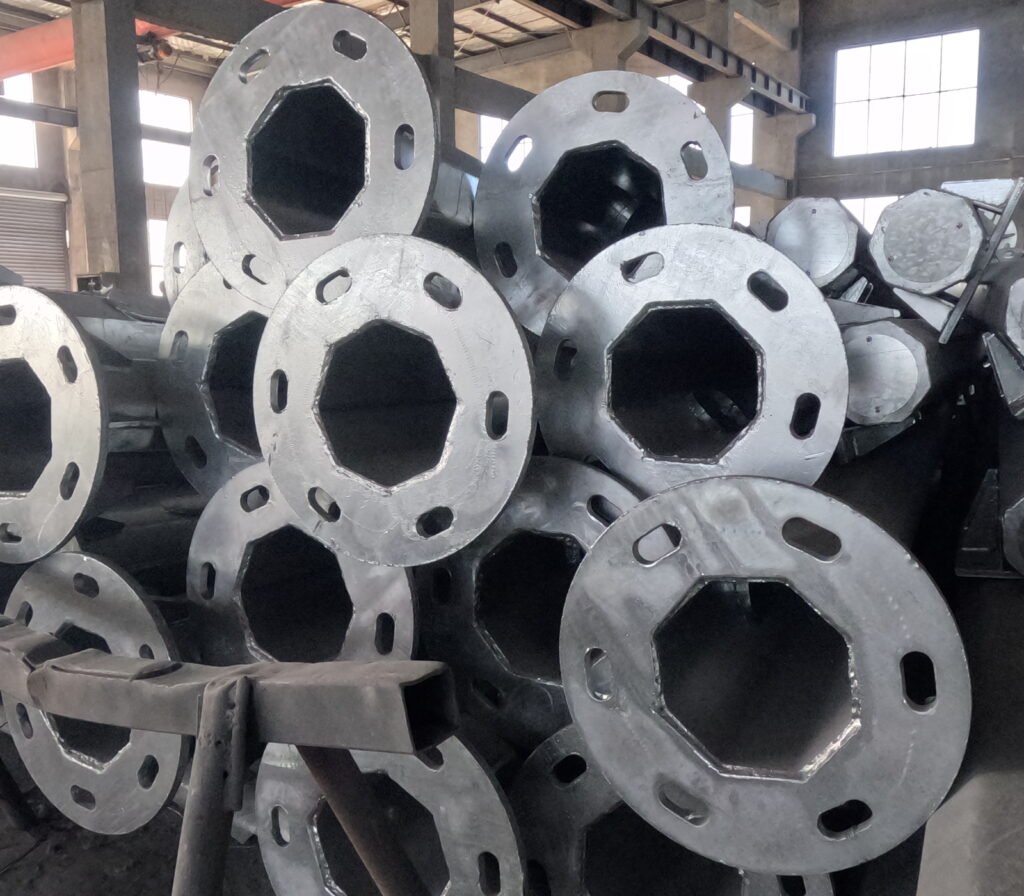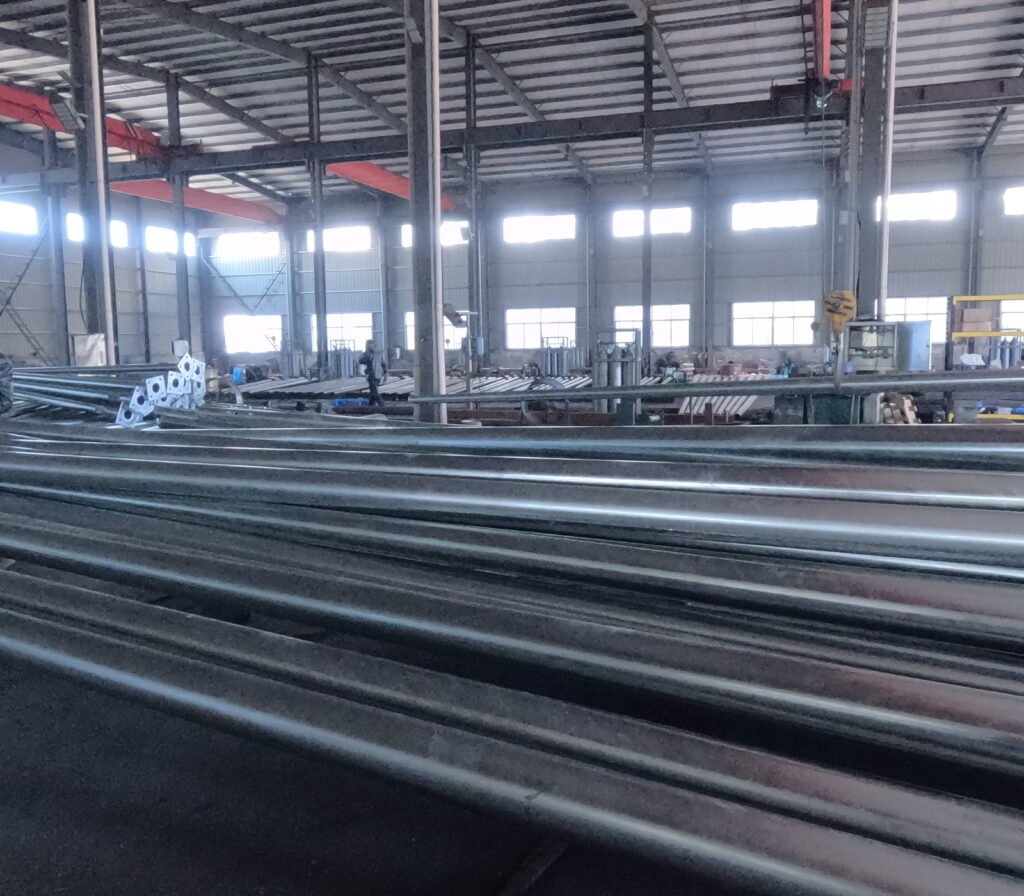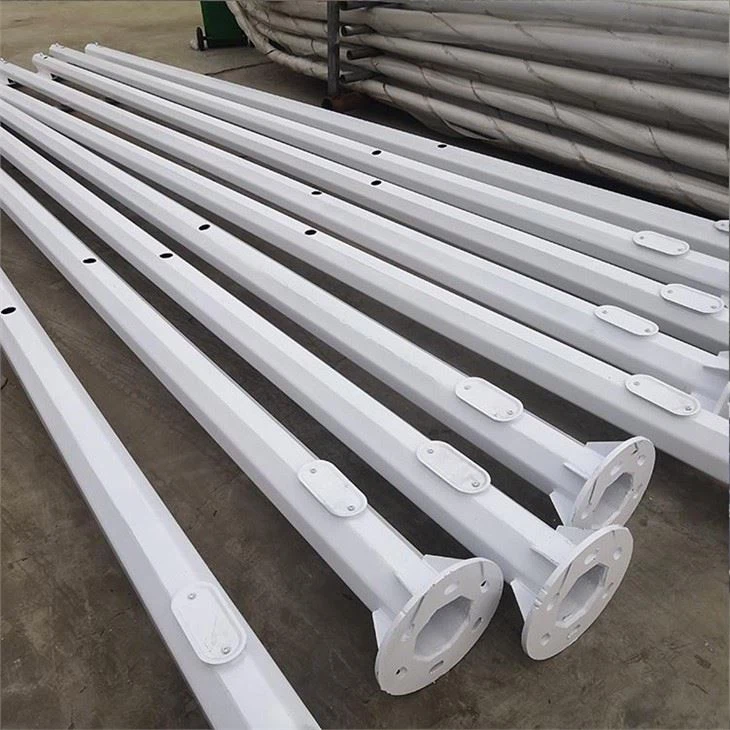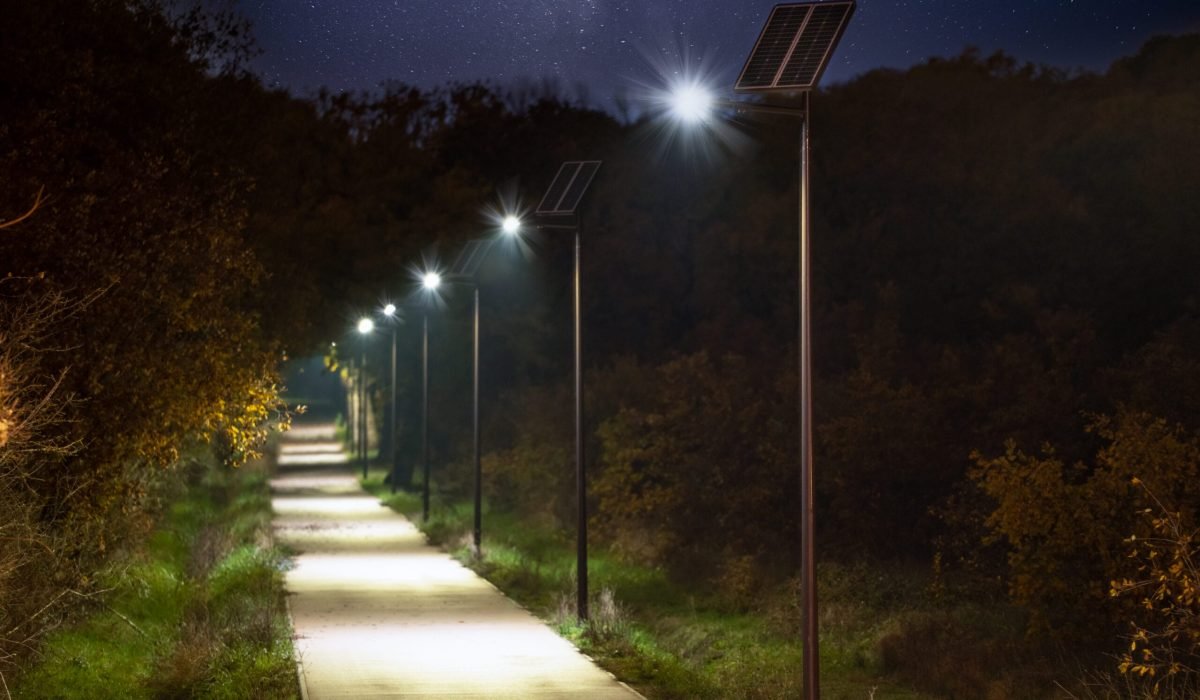Lighting poles play a crucial role in any outdoor lighting system, providing essential support for street lights, floodlights, traffic signals, and other fixtures. Whether you're lighting a highway, a stadium, or a residential street, selecting the right pole is key to safety, efficiency, and long-term durability.
Based on my 15 years managing public infrastructure and lighting projects across East Africa, I’ve seen firsthand how the right lighting pole impacts both system performance and maintenance costs. Below is a clear breakdown of the most common types of lighting poles and when to use them.
1. Round Conical Poles – Best for Residential and Urban Public Spaces
Round conical poles are a go-to option for residential streets, parks, and pedestrian zones. Their smooth taper and simple silhouette offer an elegant solution that suits both contemporary and classic landscapes.
They’re often made from steel, aluminum, or fiberglass, offering different benefits based on budget, durability, and environmental exposure.
Key Benefits:
- Elegant & Versatile Design: Blends into most environments.
- Easy to Install & Replace: Straightforward maintenance saves on lifecycle cost.
- Adaptable Materials & Heights: Can be customized for different applications.
Municipal clients often prefer round conical poles because they strike a balance between function and aesthetics, especially in residential upgrades or park revitalization projects.
2. Octagonal Poles – Ideal for Coastal and High-Wind Zones

Octagonal poles have an eight-sided profile that offers enhanced structural integrity. They’re ideal for high-wind regions, including coastal areas or open highways where pole stability is critical.
These poles are commonly fabricated from galvanized steel or powder-coated aluminum, which gives them both strength and corrosion resistance.
Key Benefits:
- Superior Wind Resistance: Engineered for storm-prone regions.
- Long-Term Durability: Corrosion-resistant and structurally sound.
- Suitable for Tall Installations: Ideal for fixtures over 8 meters.
In one project near Lake Victoria, we replaced several failed conical poles with octagonal ones—no issues since.
3. Straight Mast Arms – Designed for Intersections and Traffic Signals
Straight mast arms are specifically engineered for traffic intersections and roadway signage. These poles extend horizontally to mount a single fixture or traffic signal, providing wide-angle illumination or clear line-of-sight visibility.
Typically constructed from steel or aluminum, these poles must meet stringent urban infrastructure standards.
Key Benefits:
- Optimized for Traffic Control: Ensures safe, clear signaling at busy junctions.
- Space Efficient: Minimal footprint with targeted illumination.
- Simple Maintenance: Designed for quick installation and fixture replacement.
We’ve deployed hundreds of mast arms in Nairobi’s city center, where controlled light spread and traffic signal reliability are mission-critical.
4. Tapered Square Poles – Stylish and Strong for Urban Design Projects

Tapered square poles feature a clean, modern aesthetic that suits urban developments and architecturally sensitive zones. These poles gradually narrow toward the top and often blend better in cityscapes compared to round or octagonal forms.
Common materials include steel, aluminum, or fiberglass, and surface finishes range from brushed to powder-coated to match municipal branding or historic styles.
Key Benefits:
- Urban Aesthetics: Preferred in plazas, commercial districts, and boulevards.
- Customizable Profiles: Matches unique architectural surroundings.
- Durable Yet Elegant: Combines visual appeal with robust performance.
We specified tapered square poles in a Nairobi central business district project, where the client prioritized visual harmony with surrounding architecture.
5. Floodlight Poles – Built for High-Mount, Large Area Illumination
Floodlight poles are engineered for height and reach. They support multiple high-power floodlights and are commonly used for sports fields, parking lots, airports, and industrial sites.
Most are made from hot-dip galvanized steel or aluminum, with height options ranging from 10 meters to 30+ meters.
Key Benefits:
- High Mounting Capability: Covers large areas with fewer poles.
- Multi-Light Configurations: Mount several floodlights per pole.
- Weather-Resistant Build: Withstands outdoor elements year-round.
In one stadium lighting project in Kigali, we installed 24-meter galvanized floodlight poles with bracketed LED arrays—delivering shadow-free coverage with low maintenance needs.
6. Cam-Type Poles – Adjustable for Custom Traffic Applications

Cam-type poles are modular poles that allow height adjustment or arm repositioning post-installation. These are frequently used in traffic management zones, where pole height or configuration may change due to evolving intersection designs or signage needs.
Steel and aluminum versions are common, and many include hinged base designs for easy tilt-down access.
Key Benefits:
- Adjustable Height & Configuration: Fits dynamic project needs.
- Easy Maintenance Access: Ideal for locations with limited crane access.
- Reliable Performance: Built with traffic-rated load requirements.
These poles are especially useful in temporary or phased projects, such as road expansions or temporary detours.
7. Decorative Poles – For Aesthetic-Focused Public Lighting
Decorative lighting poles are selected when design is as important as function. These poles are often seen in historic districts, shopping centers, and parks where visual cohesion is a priority.
From cast iron vintage replicas to sleek contemporary aluminum poles, the design options are vast.
Key Benefits:
- High Visual Appeal: Enhances the character of streetscapes.
- Wide Range of Styles: From classic to modern.
- Perfect for Public Spaces: Aligns with landscaping and architectural themes.
We’ve seen strong adoption of decorative poles in Zanzibar and Addis Ababa for tourism corridors and heritage zones, often paired with low-glare LED lantern fixtures.
Conclusion: Match the Lighting Pole to Your Application
Choosing the right lighting pole is more than just a structural decision—it directly affects lighting performance, safety, and long-term costs. From round conical poles for neighborhood streets to floodlight poles for stadiums, each type is designed for specific use cases.
Nova Pole offers a full range of lighting pole solutions tailored to your project needs—whether it’s wind-rated designs for coastal cities or decorative options for urban beautification.
If you're planning a new lighting project or upgrading an existing one, reach out to our team to discuss the best pole type for your application.


